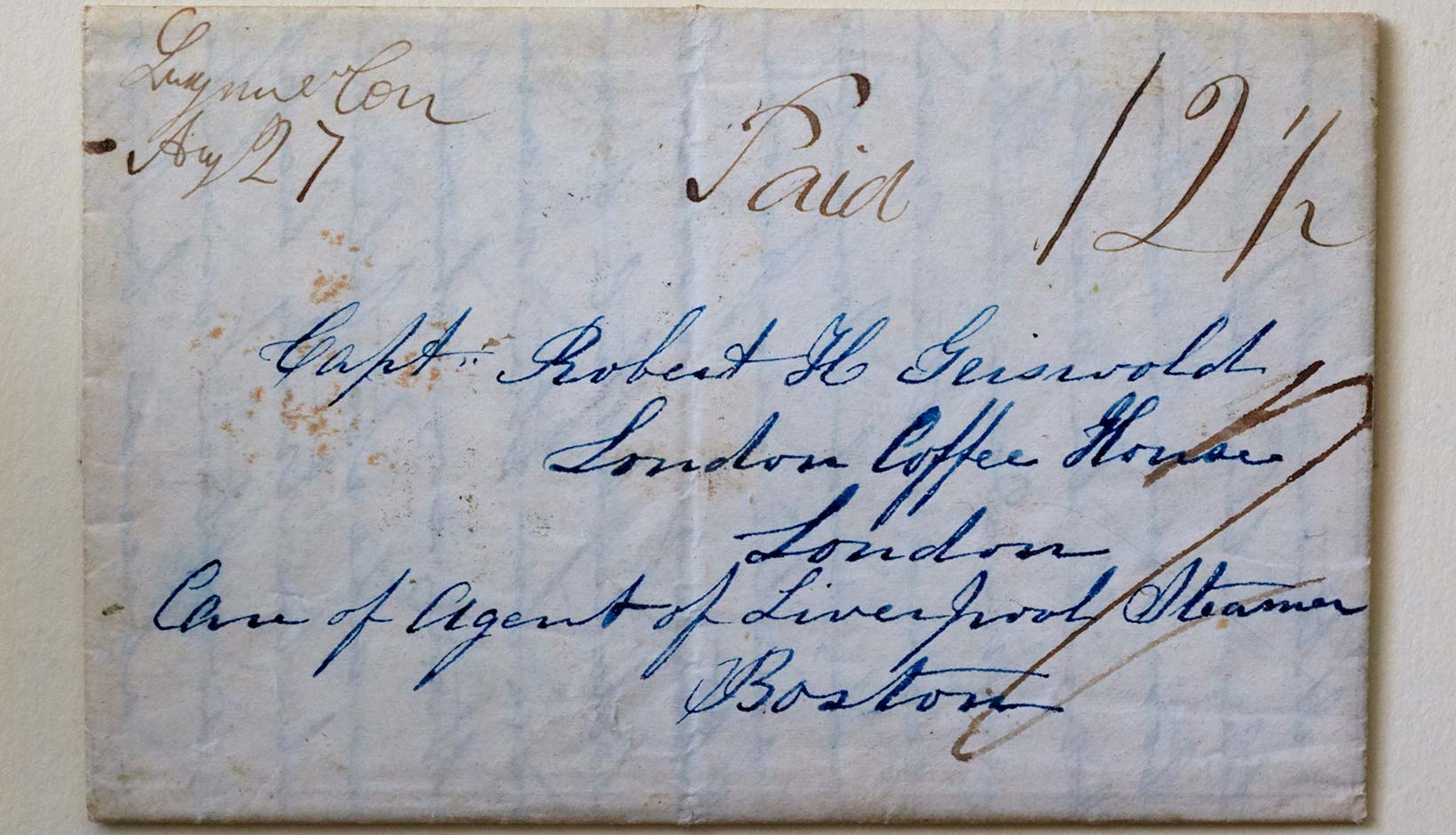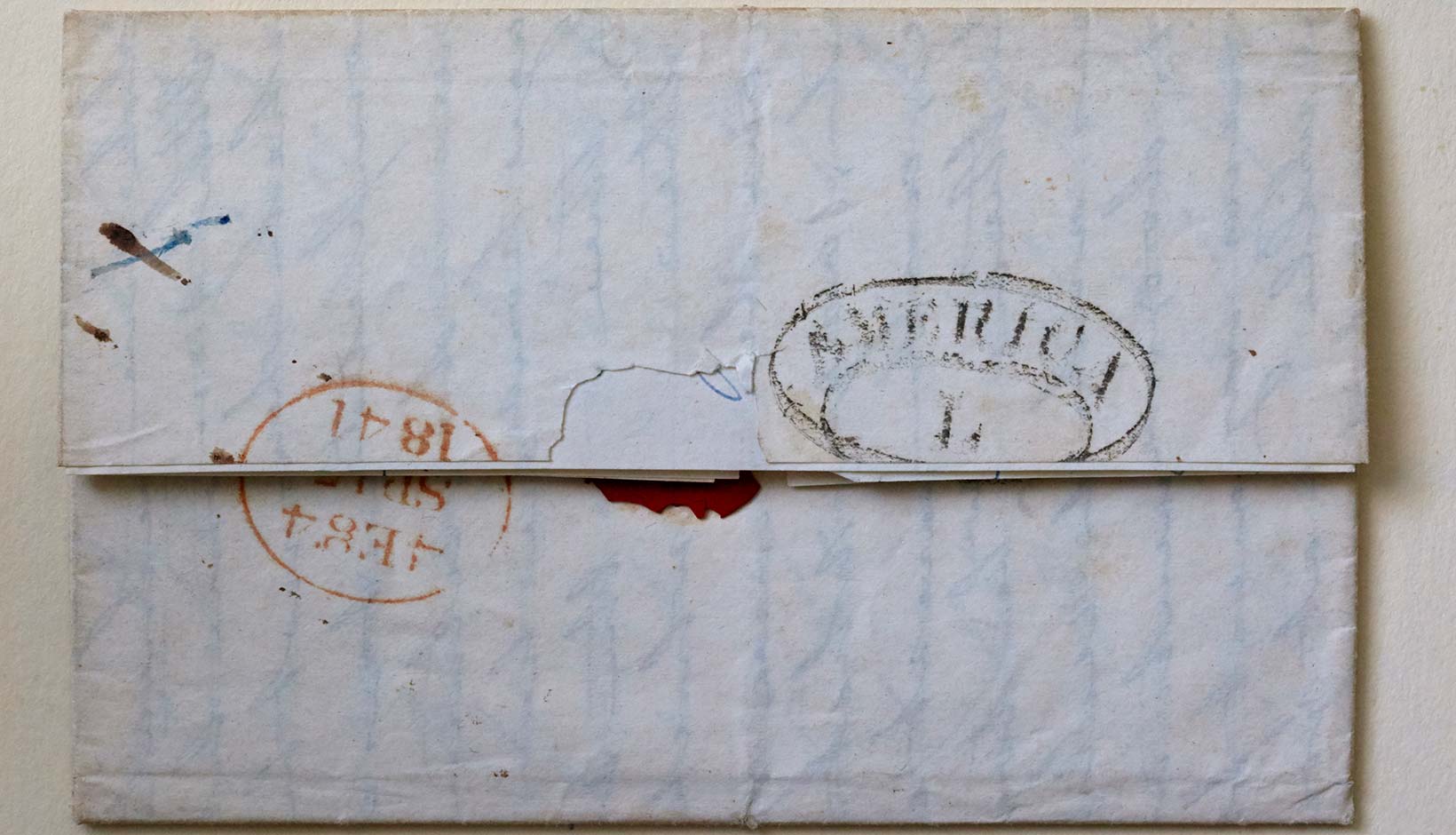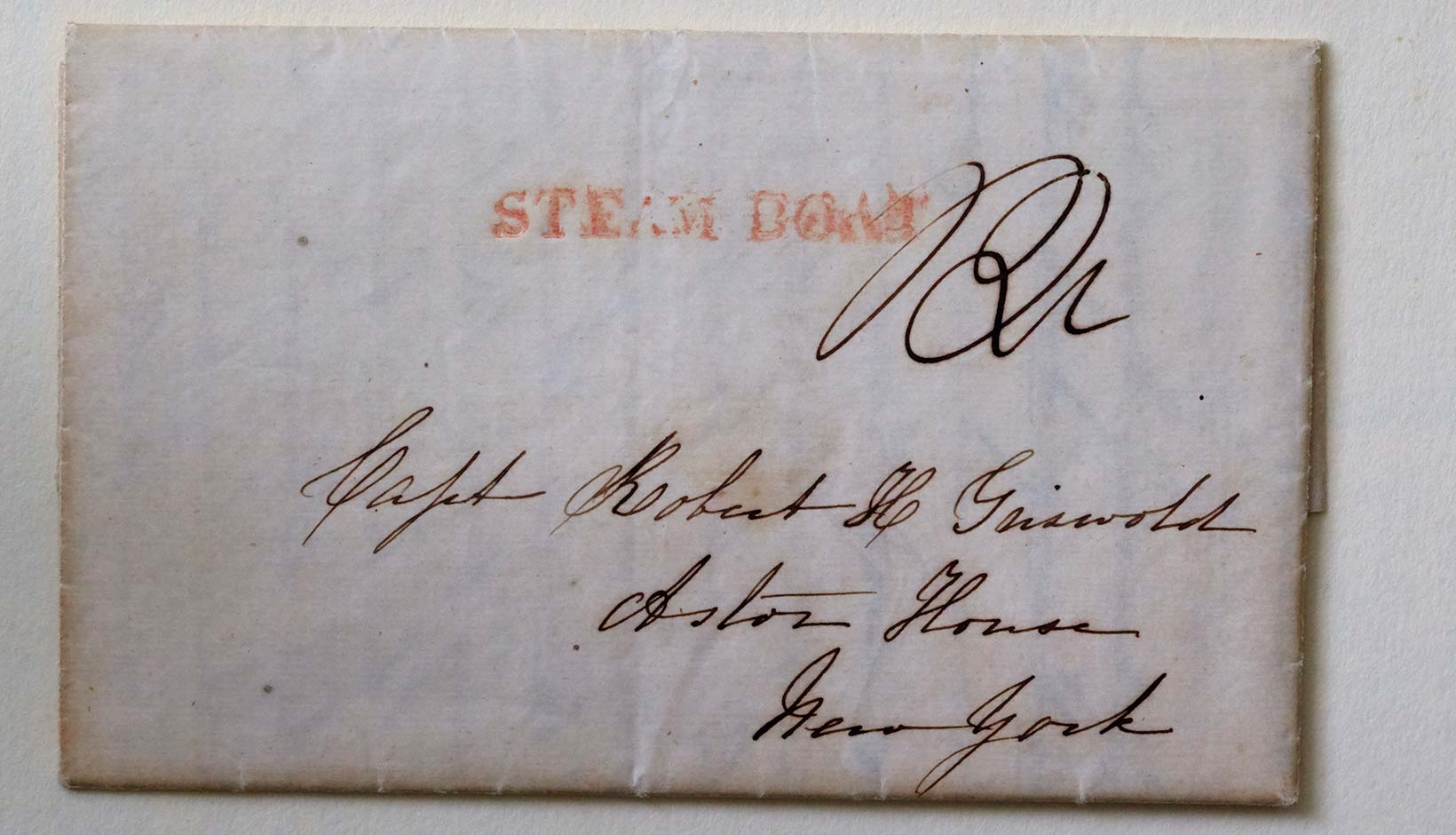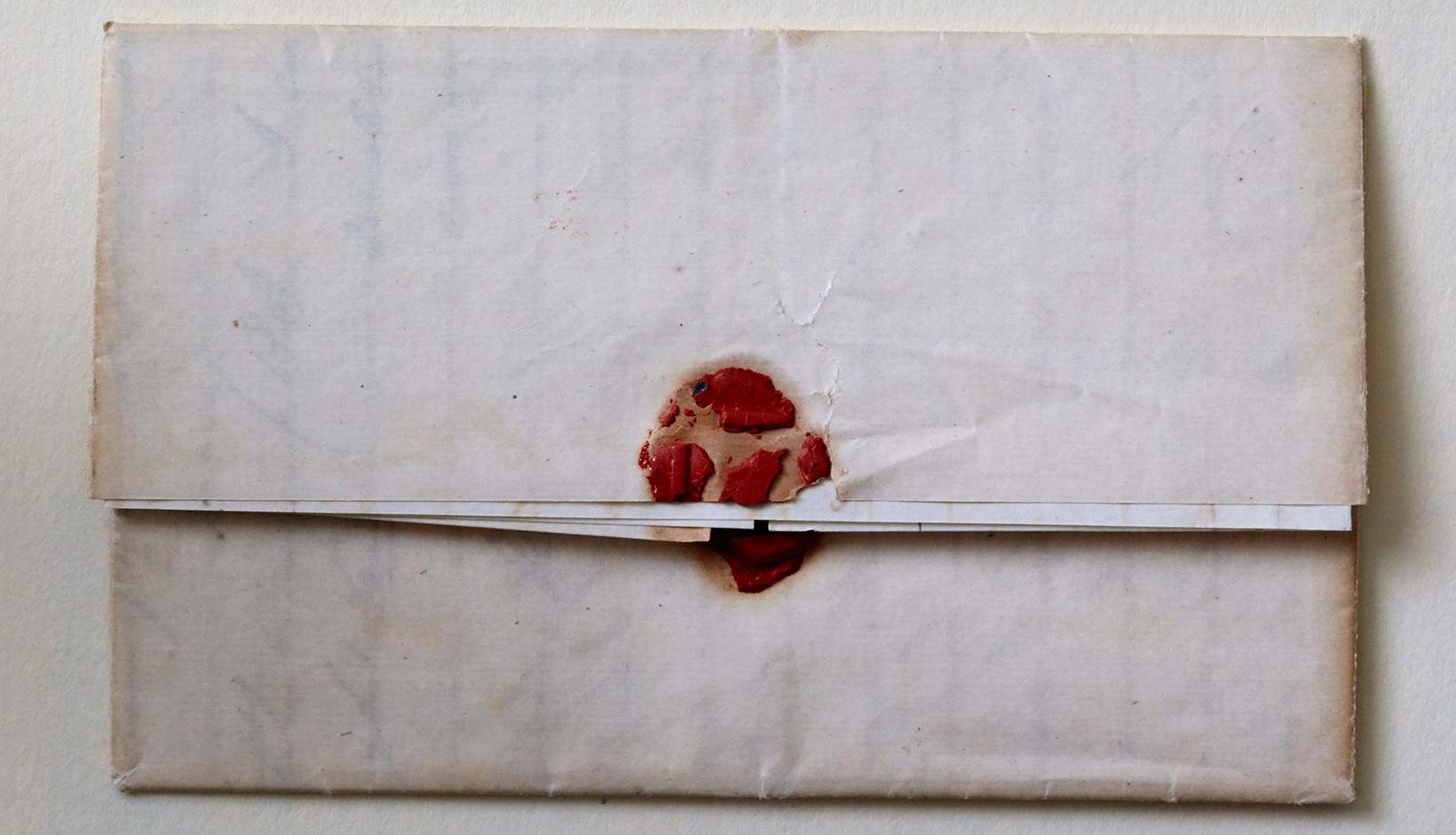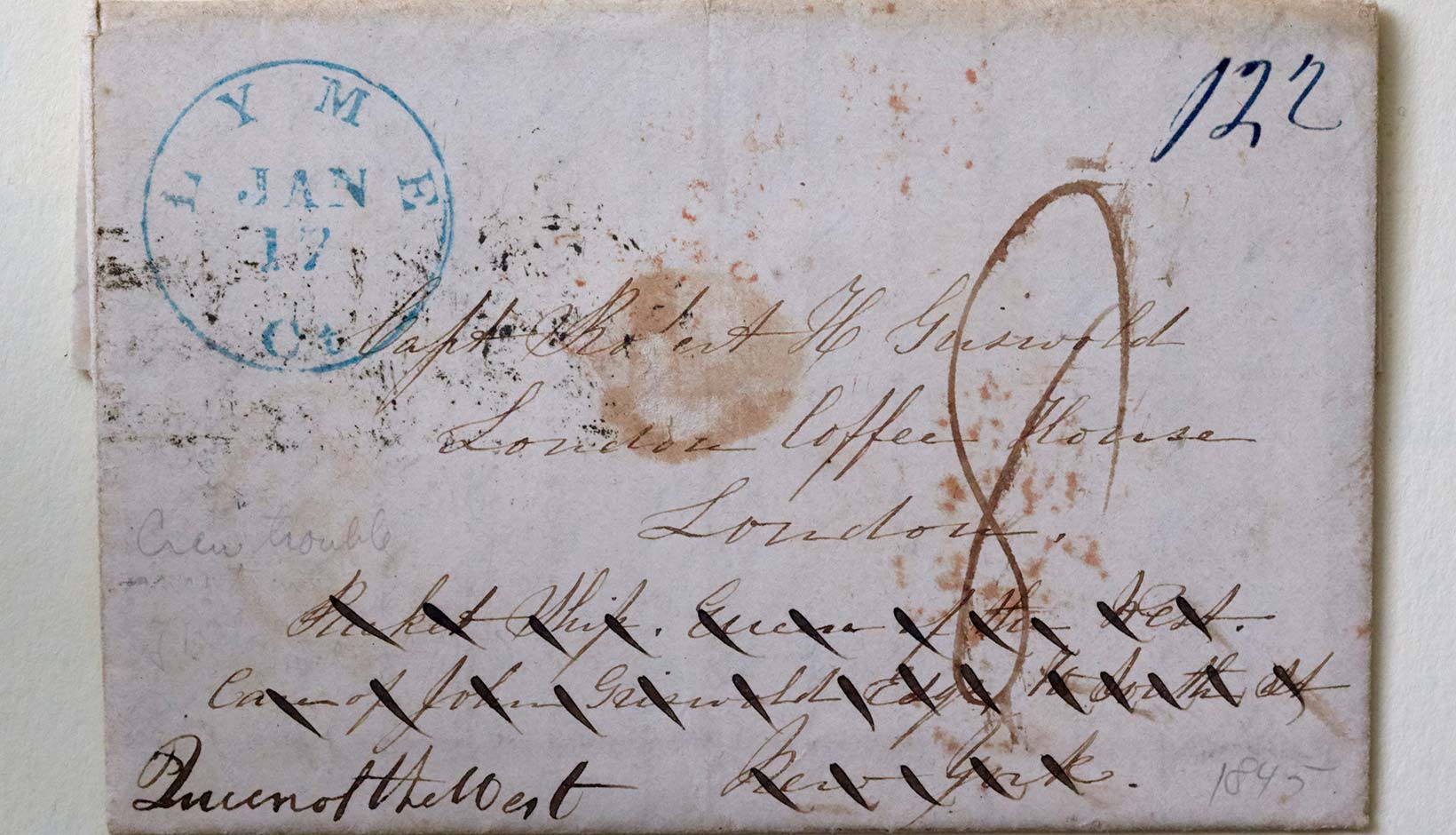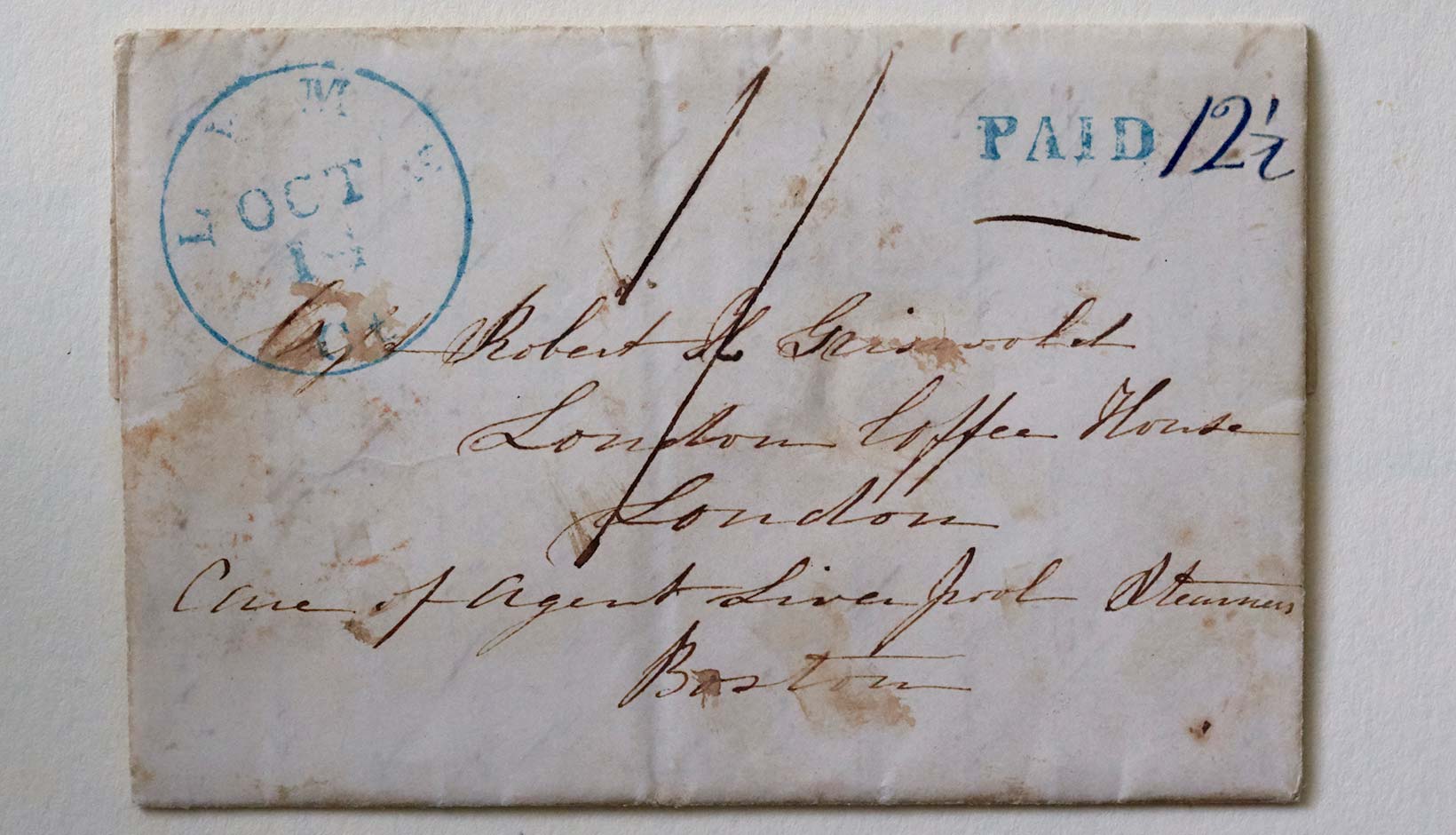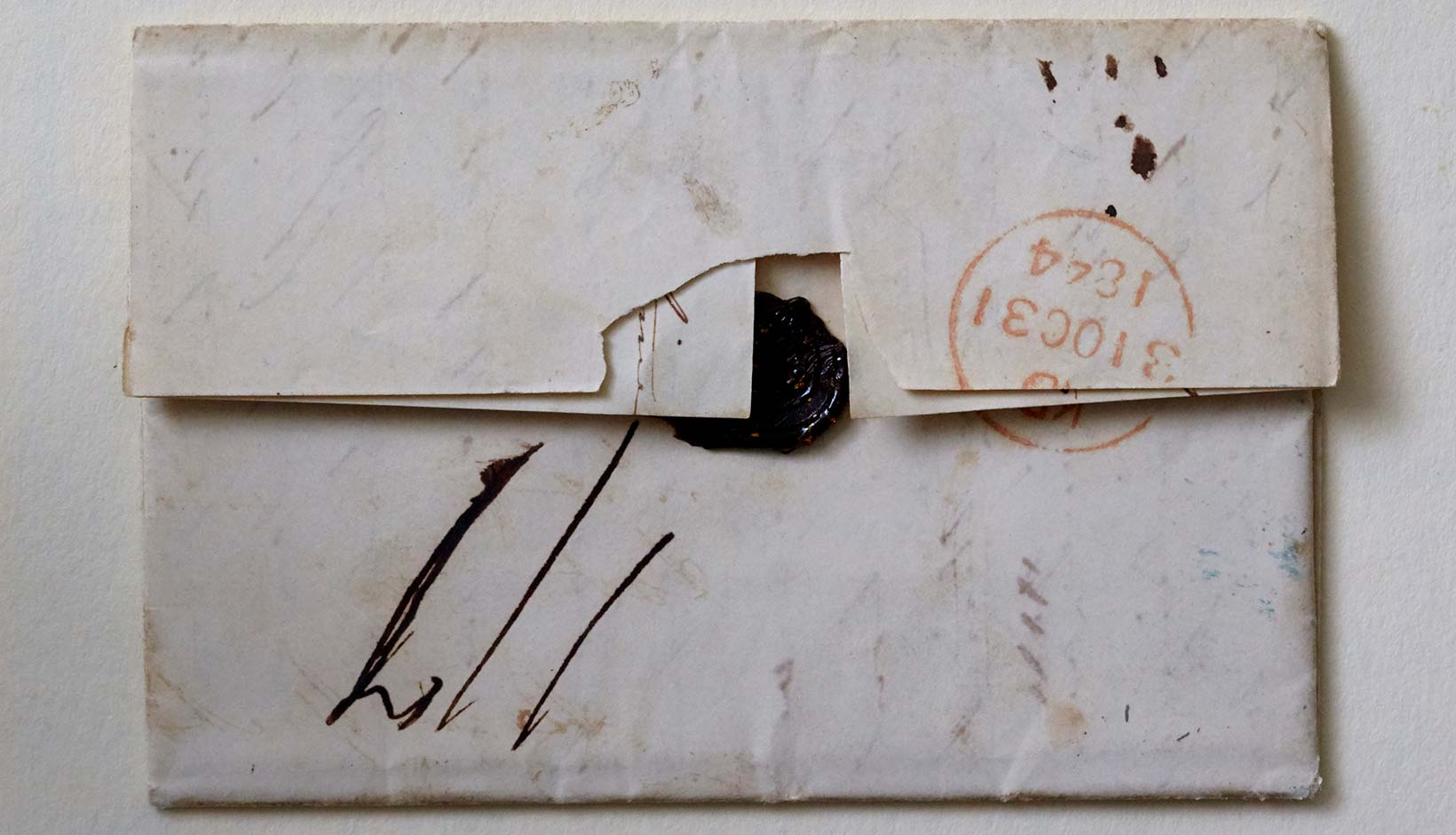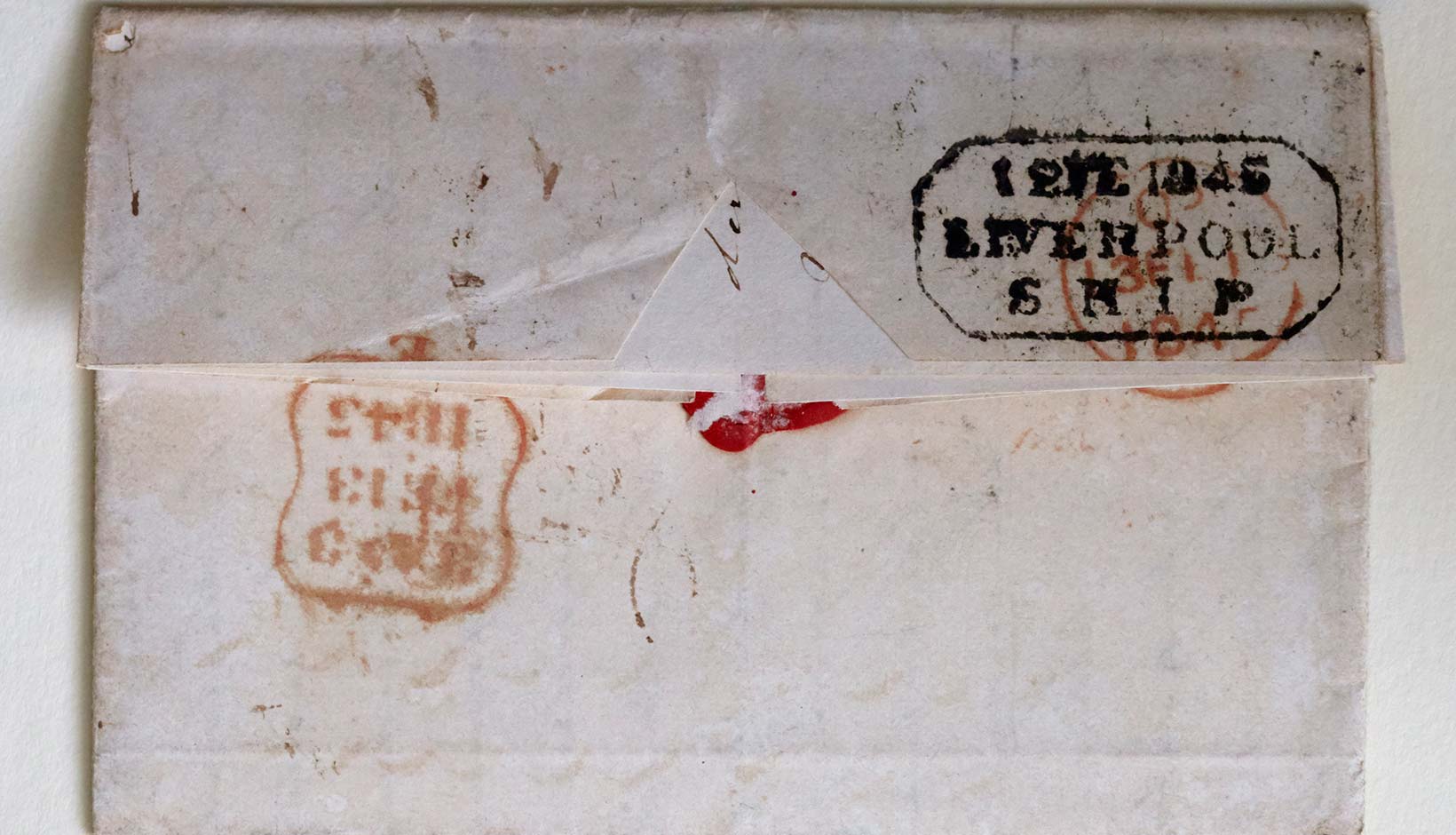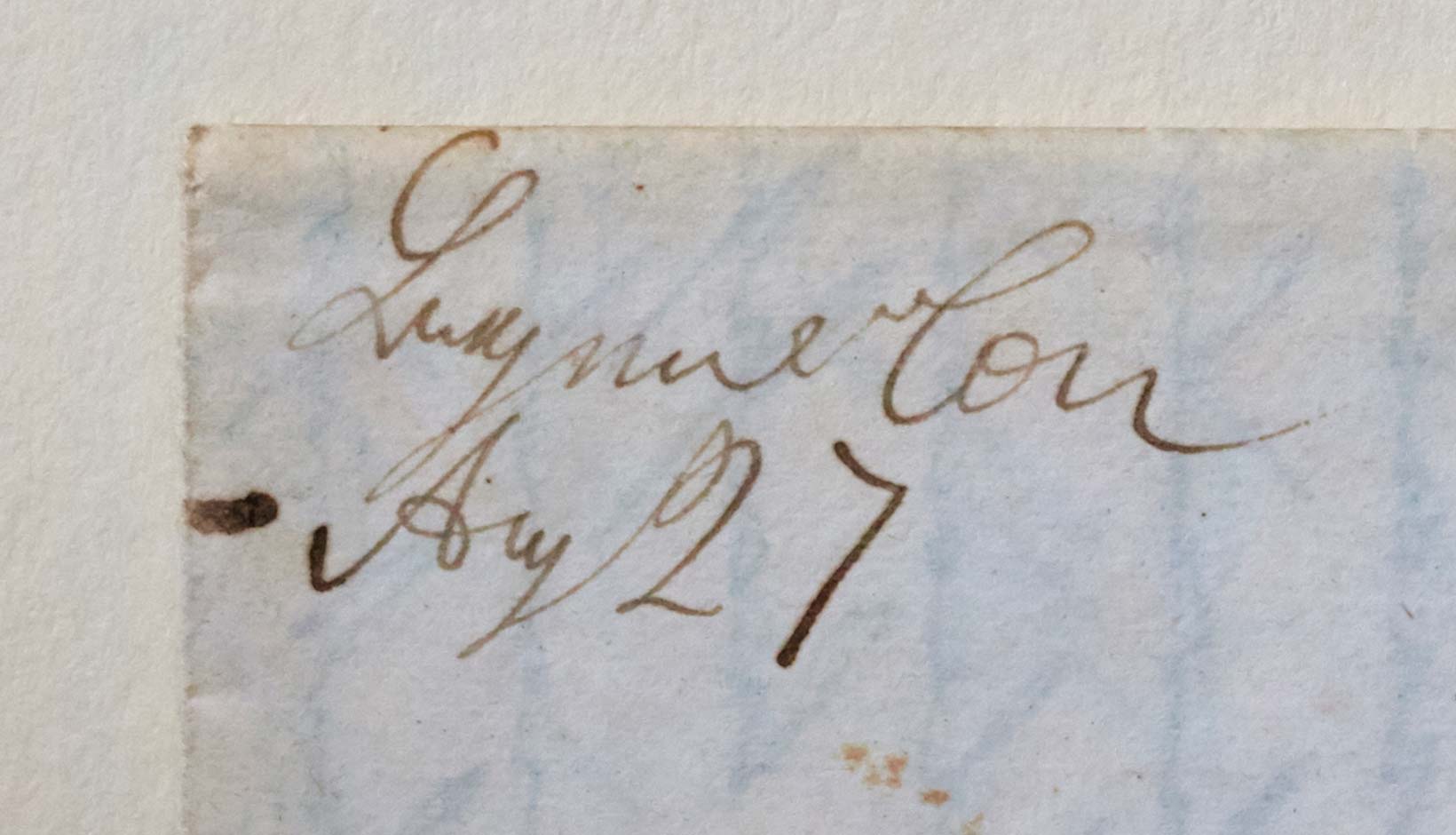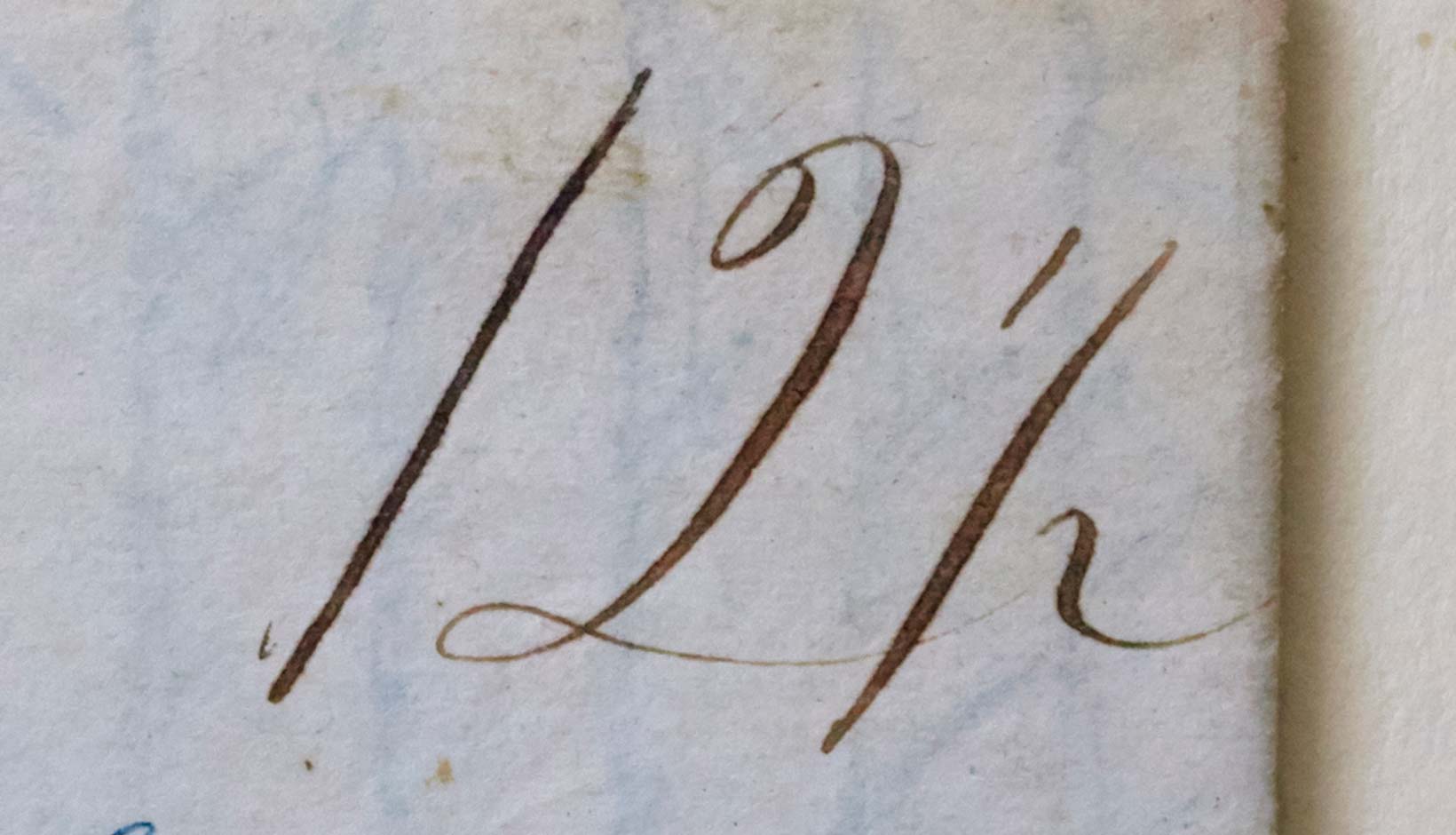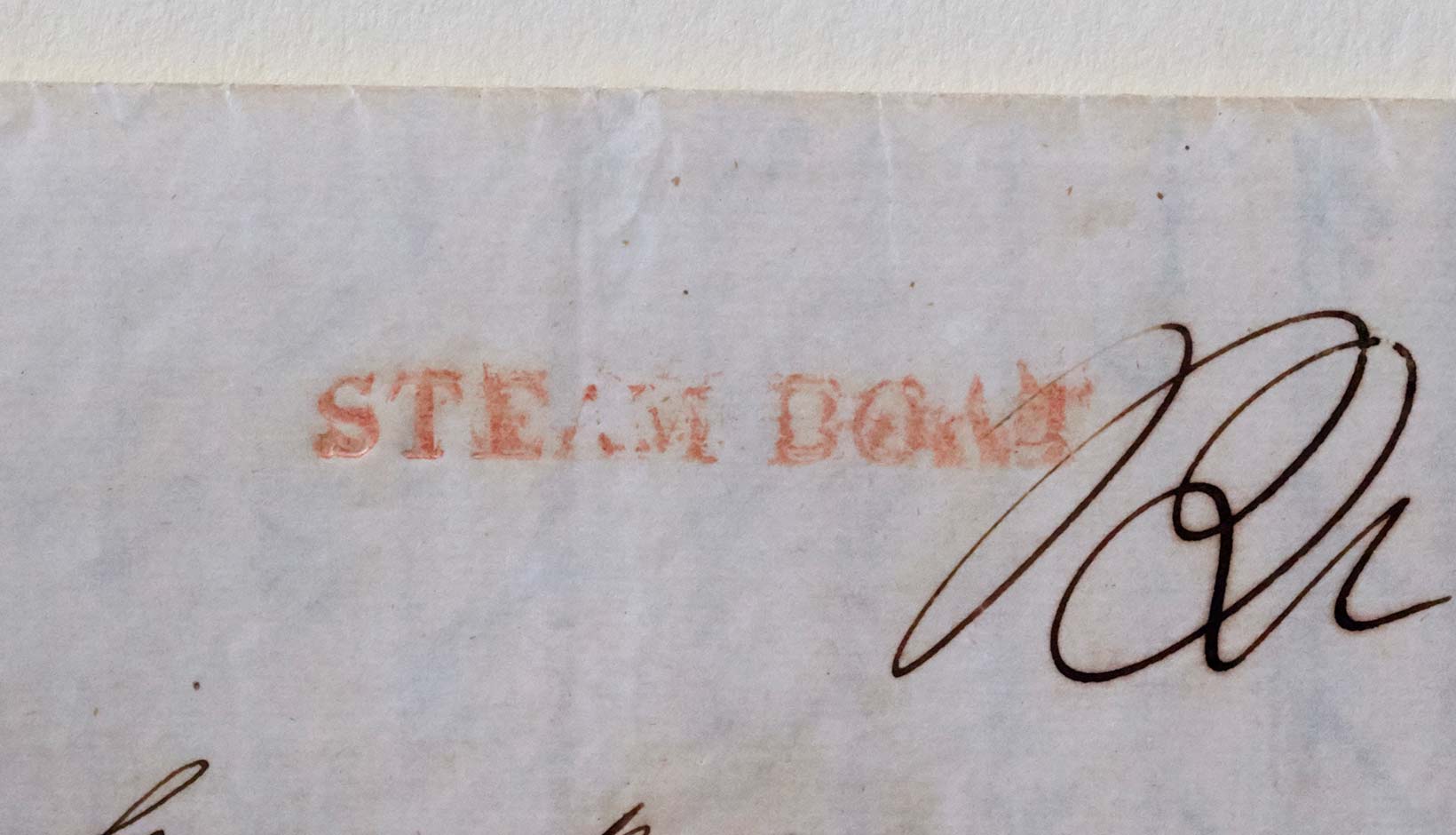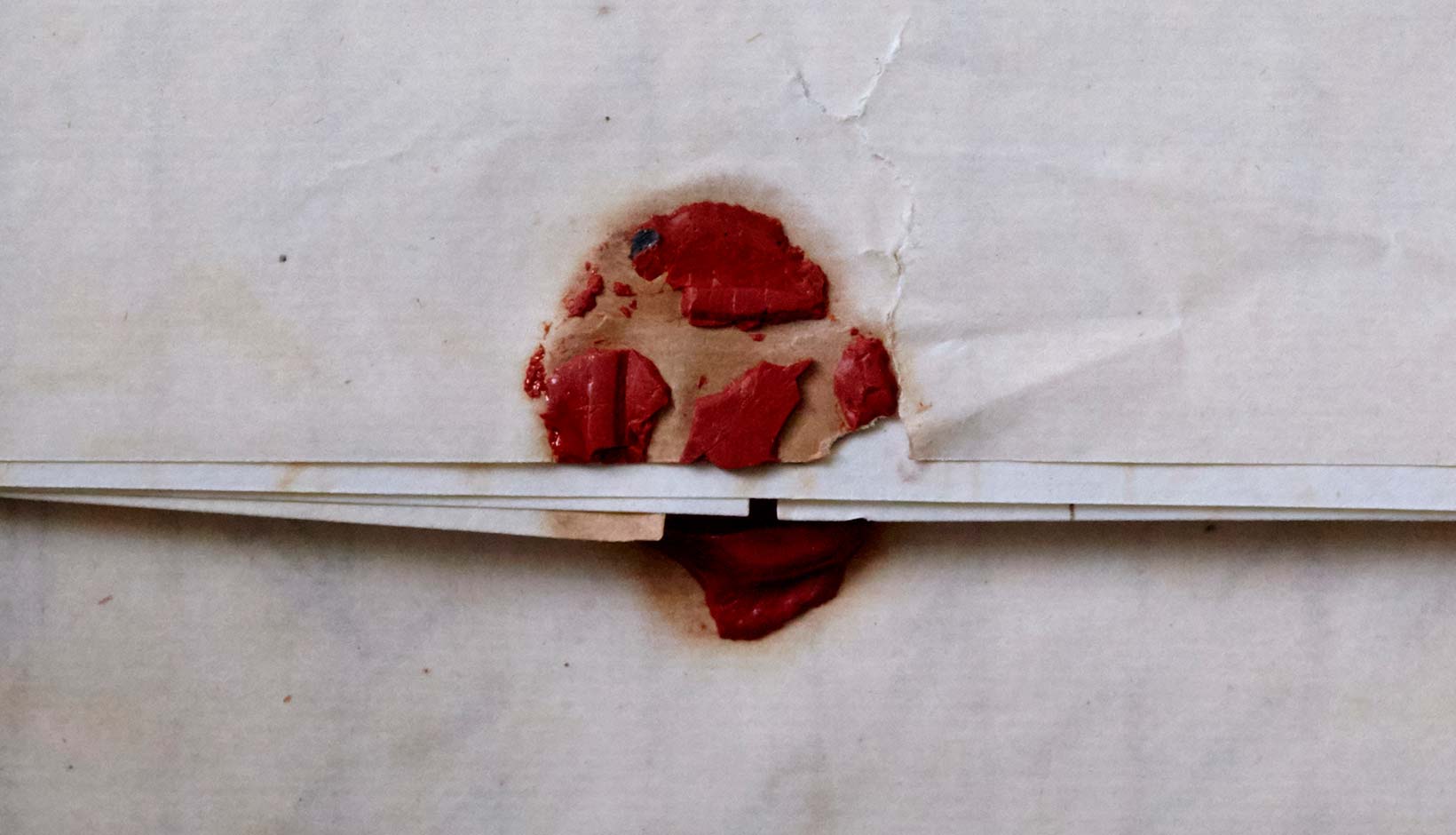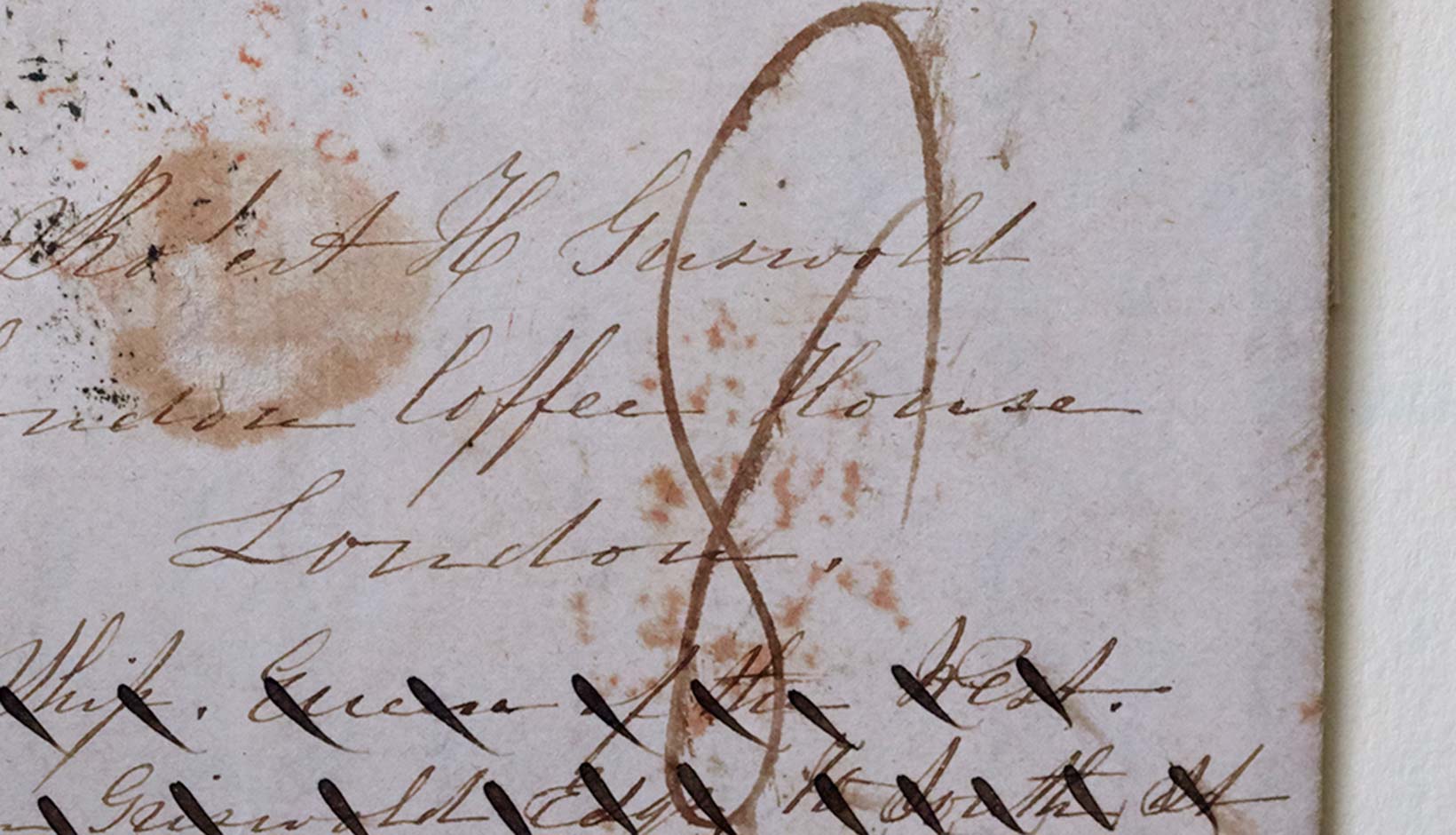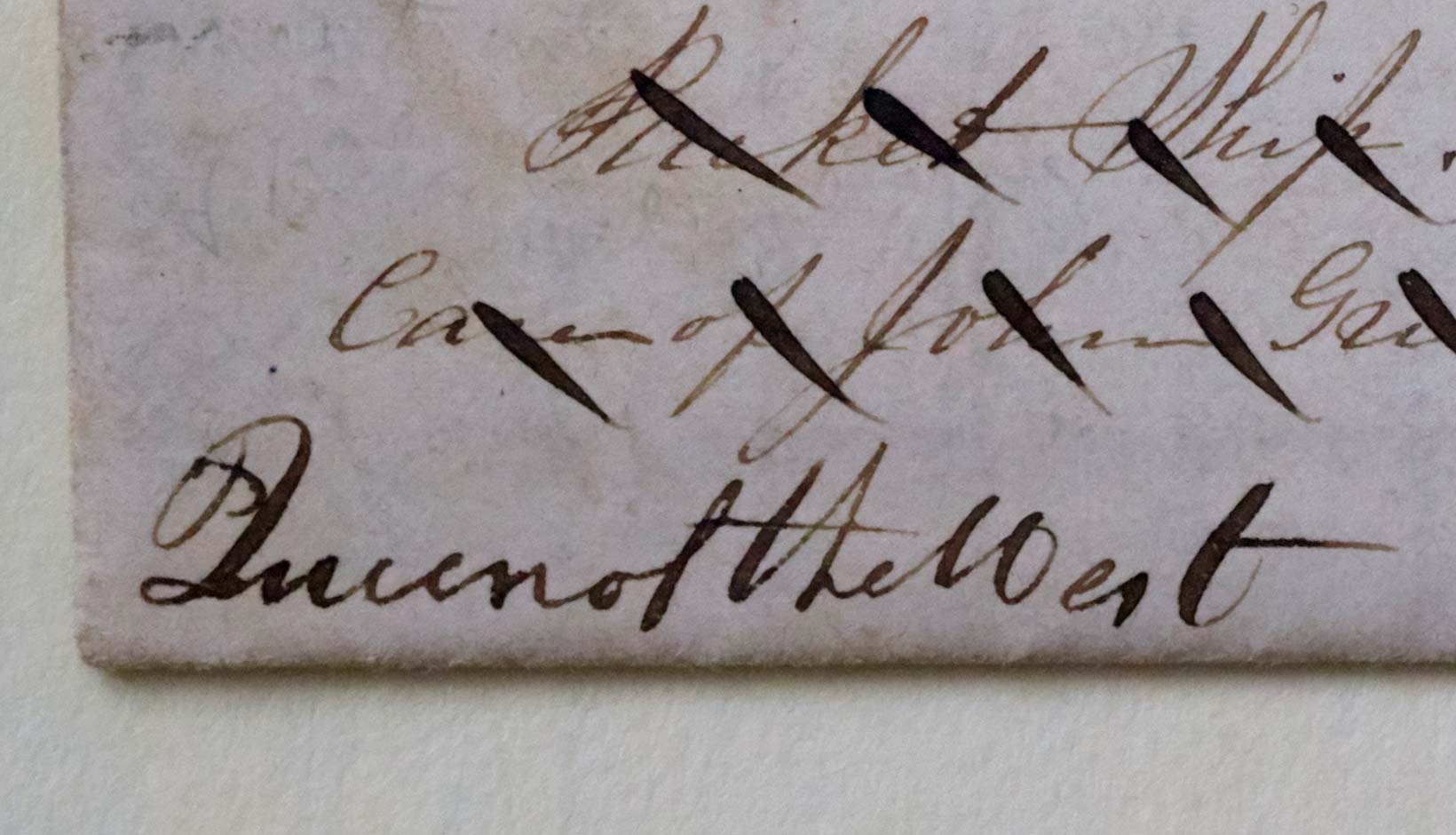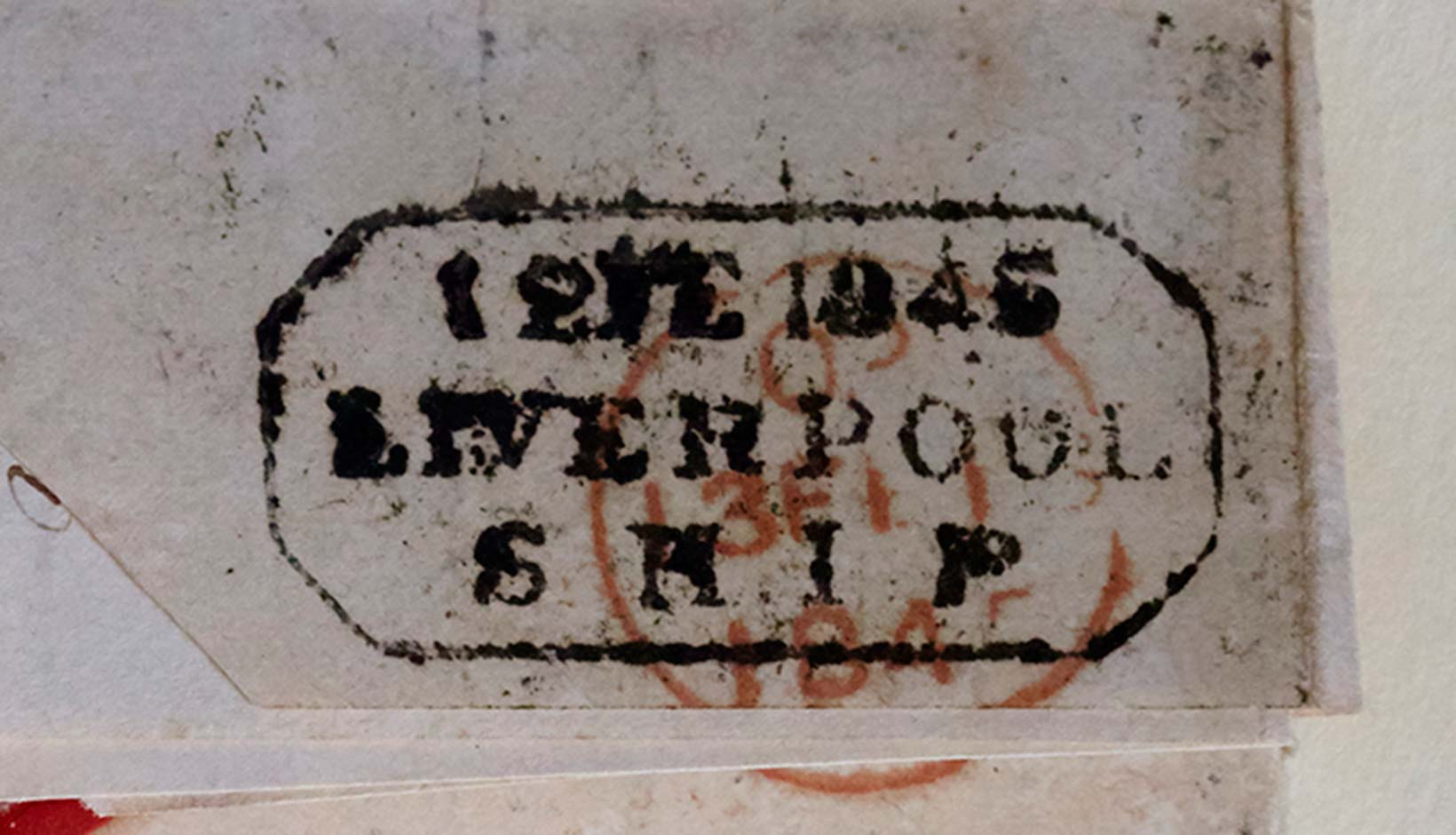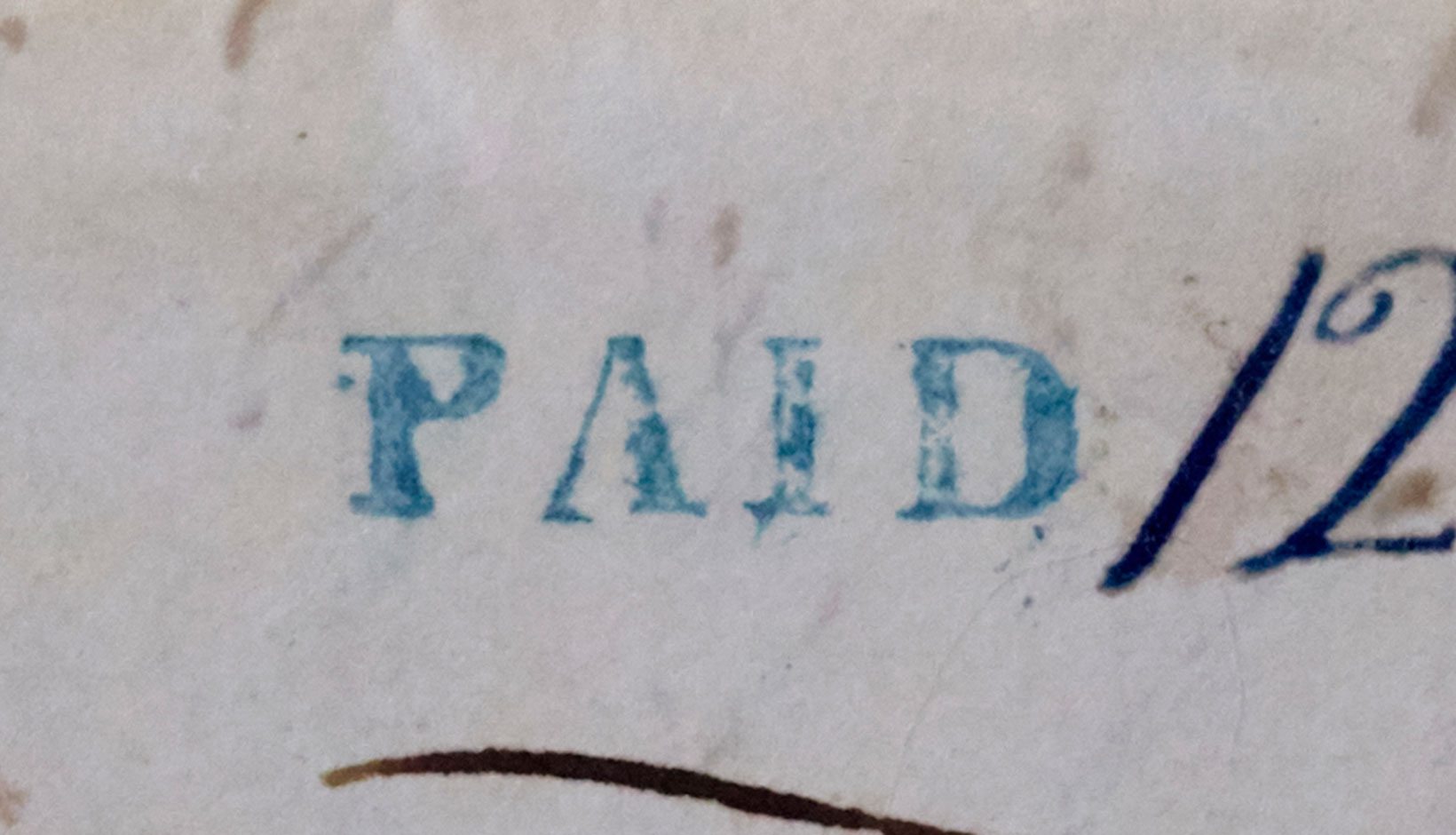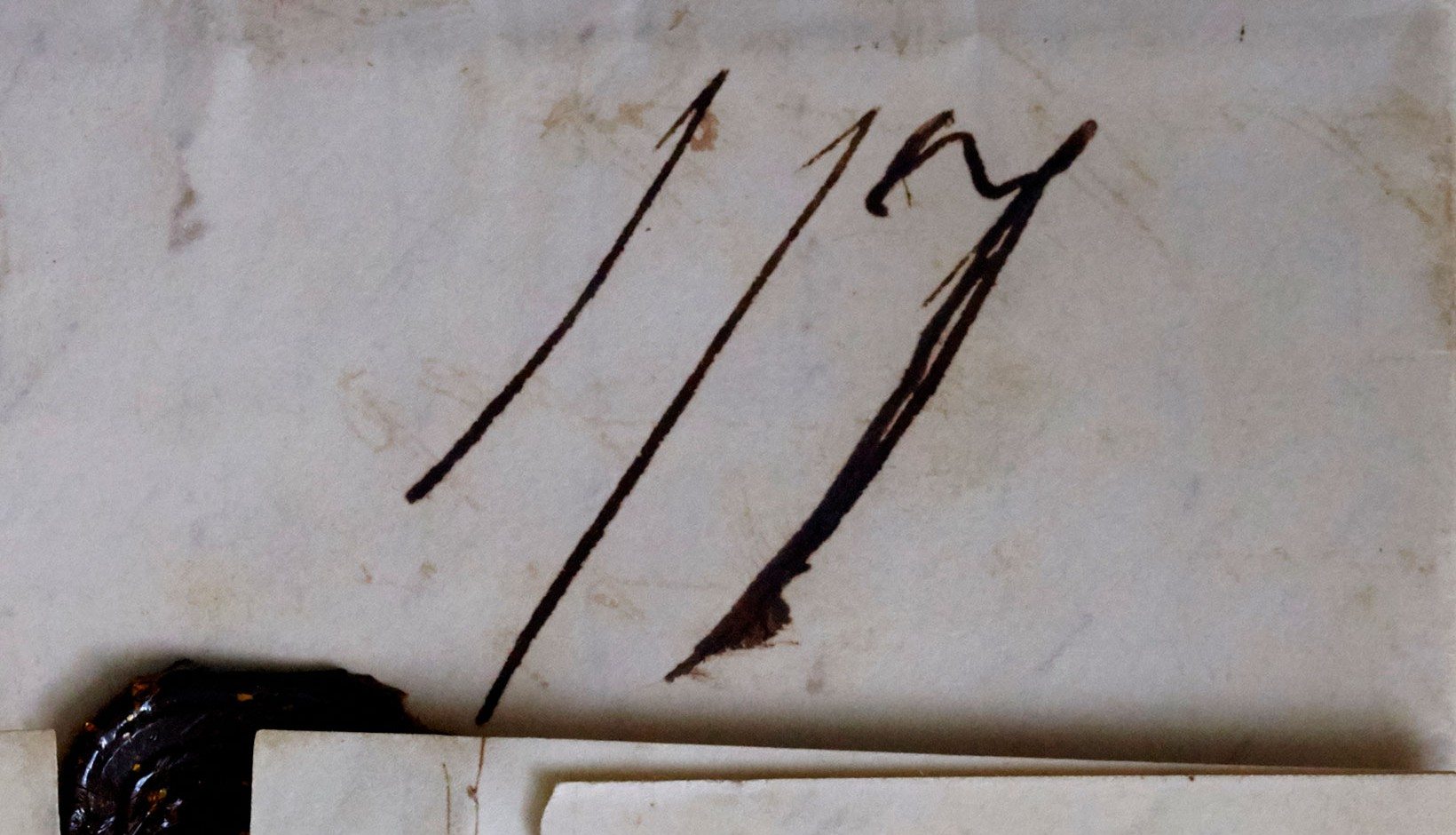Letter Markings
- The Museum will be closed Sunday, April 9 in observance of Easter.
Explanations of the Markings on the Covers of the Letters
Rather than sealed in a separate envelope, these early letters were single sheets of paper, folded in such a way that two sides, known as covers, were left blank.
The front cover was used for the address and outgoing postage marks.
The back cover often shows a broken wax seal. By the end of a letter’s journey from sender to recipient, both sides often were marked with an array of handwritten notations and inked stamps.
Read the LettersThe Markings
Steam Boat
This letter traveled from Lyme to New York via one of the many steam boats that sailed down the Connecticut River from Hartford and along the Connecticut shore of Long Island Sound on a daily basis. Letters coming from New York to Lyme on the Steam Boats were routed through a Mr. Bacon at the ferry.
Thank you for visiting our online learning resource
Please take a few moments to reflect on your experience and share your comments
Share your feedback
